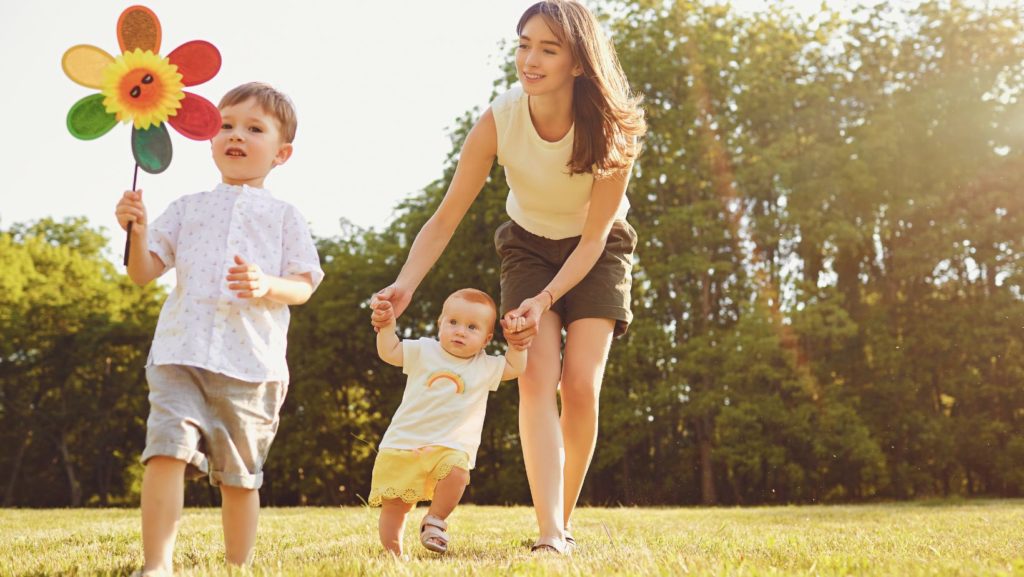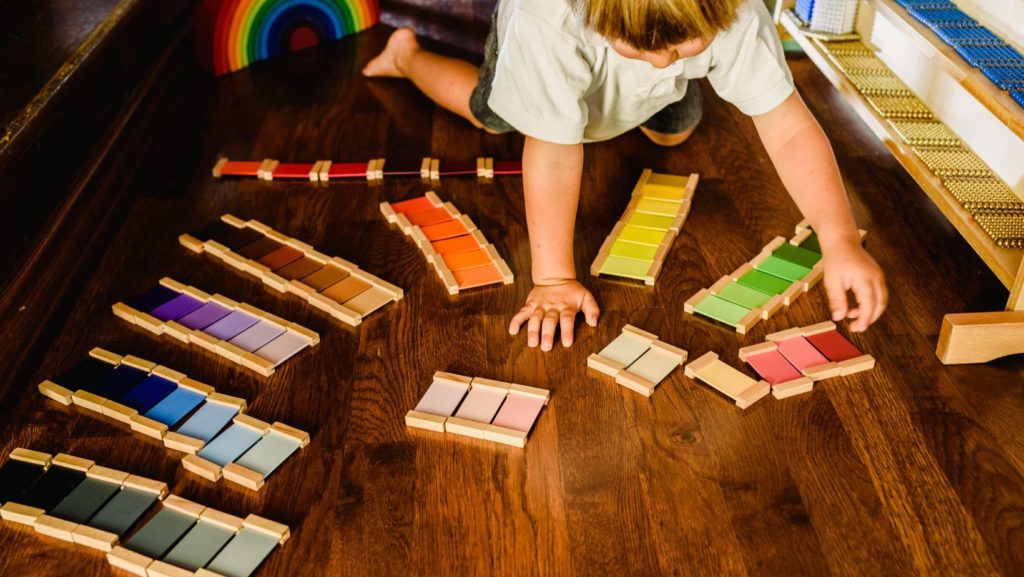If you’re an au pair, you may or may not have heard of the Montessori method of learning. According to American Montessori Society, Montessori is a holistic, experiential, child-directed system of education, developed by revolutionary educator Dr. Maria Montessori over a century ago. It focuses on the whole child and motivates independence and self-growth in cognitive, emotional, social, and physical development.

Understanding Montessori
Montessori education is typically present in Montessori focused schools and preschools, but that doesn’t mean your host family and you as the au pair can’t apply Montessori principles at home! Even if your child doesn’t attend a Montessori school, you can still focus on these philosophies inside the home. As with any approaches to childcare or learning, it’s important that you and your host family be on the same page before implementing any changes to the normal routine.
Perhaps the biggest difference between Montessori learning and traditional learning is that Montessori is child-led, which means the adult’s role is more of a guide than an instructor. Your role as an au pair will be to observe and support, rather than teach in a traditional way. By doing this, you are able to recognize and interpret your child’s needs and provide the necessary environment and equipment they need to learn. For example, if you know your child has an interest in cooking, you might set up their play kitchen and let them decide if they want to prepare an imaginative meal for you to enjoy together.
Creating a Montessori Style Environment
A great way to set up a Montessori style environment at home is to have child sized furniture and tools, like a smaller sized table and chair. Additionally, it’s helpful for items children use to be placed in easily accessible places so they can independently get to them as needed. Keeping spaces organized and simple will also help kids thrive in a Montessori learning environment. Additionally, you can use outside space for Montessori style learning, like playing in the backyard, taking walks, or visiting parks.

Practical Life Activities and Montessori
A wonderful element of the Montessori lifestyle for kids is that they will learn practical, everyday skills, like dressing independently and preparing food. Obviously, there are age appropriate boundaries you’ll need to set as an au pair. For example, you wouldn’t let a two year old use the stove to cook something. But, you can definitely allow independence in other ways like getting snacks from a low shelf in the pantry or putting fruit into to-go containers before your park date. A big part of learning the Montessori way is being independent, so creating an environment where kids can access what they need when they need it is a part of your role as their au pair.
Language Development Through Montessori
Whether you’re teaching your host child your native language or helping them develop their English language abilities, you can use Montessori as a way to support their learning. Talking about anything and everything you do is an excellent way to do that. If you’re taking a walk, describing in detail what you see and asking your child to do the same can help them build their vocabulary and confidence when communicating. Reading books together, encouraging your child to read to you or with you, and even developing your own stories are great ways to enhance language learning the Montessori way.
Incorporating Math and Science into your Montessori Home
You may be thinking math and science learning is reserved for the classroom, but when it comes to Montessori, it’s easier than you think to incorporate these subjects into your everyday life. For example, if you’re cooking with your child, using a measuring cup or counting spoonfuls can be a fantastic way to introduce math concepts. Doing simple science experiments using items from around the house on a rainy day can also be a fascinating way to practice Montessori learning at home. Even a walk around the neighborhood can turn into a Montessori science lesson.

The Montessori Approach to Behavior
When it comes to discipline in a Montessori home, focusing on natural consequences and redirection are preferred methods. A natural consequence is what occurs inevitably as the effect of a previous behavior. For example, if you don’t put on a coat when you go outside on a winter day, you will likely feel cold. As long as the circumstances are safe and your host family is in agreement, using natural consequences as the au pair is typically a preferred method in a Montessori style home. Redirection is also a helpful way to address behavioral concerns. Instead of saying, “No” or putting your child in time-out if they continue to grab a toy from their sibling, you can introduce a different toy or activity to redirect their attention and behavior. Montessori leans into peaceful resolution when it comes to conflict.
Working with Host Families
If Montessori learning is something your host family is encouraging you to practice at home with your host children, get curious! Ask them questions, do some research, and learn as much as possible. This is an exciting opportunity to learn a new skill, enhance your CV, and help shape the lives of your host kids in a unique way. If you find Montessori fascinating and want to introduce some new concepts to your host children, have a conversation with your host family about your ideas to be sure you’re in agreement.
Montessori learning can feel new and different if you haven’t been exposed to it before, but it can also be a very effective way to raise children and run a household. Promoting independence, learning through practical experiences, and acting as a guide rather than a leader can help children turn into adults who thrive and succeed both professionally and personally. For more Montessori inspired activities and learning, check out our Pinterest board.
